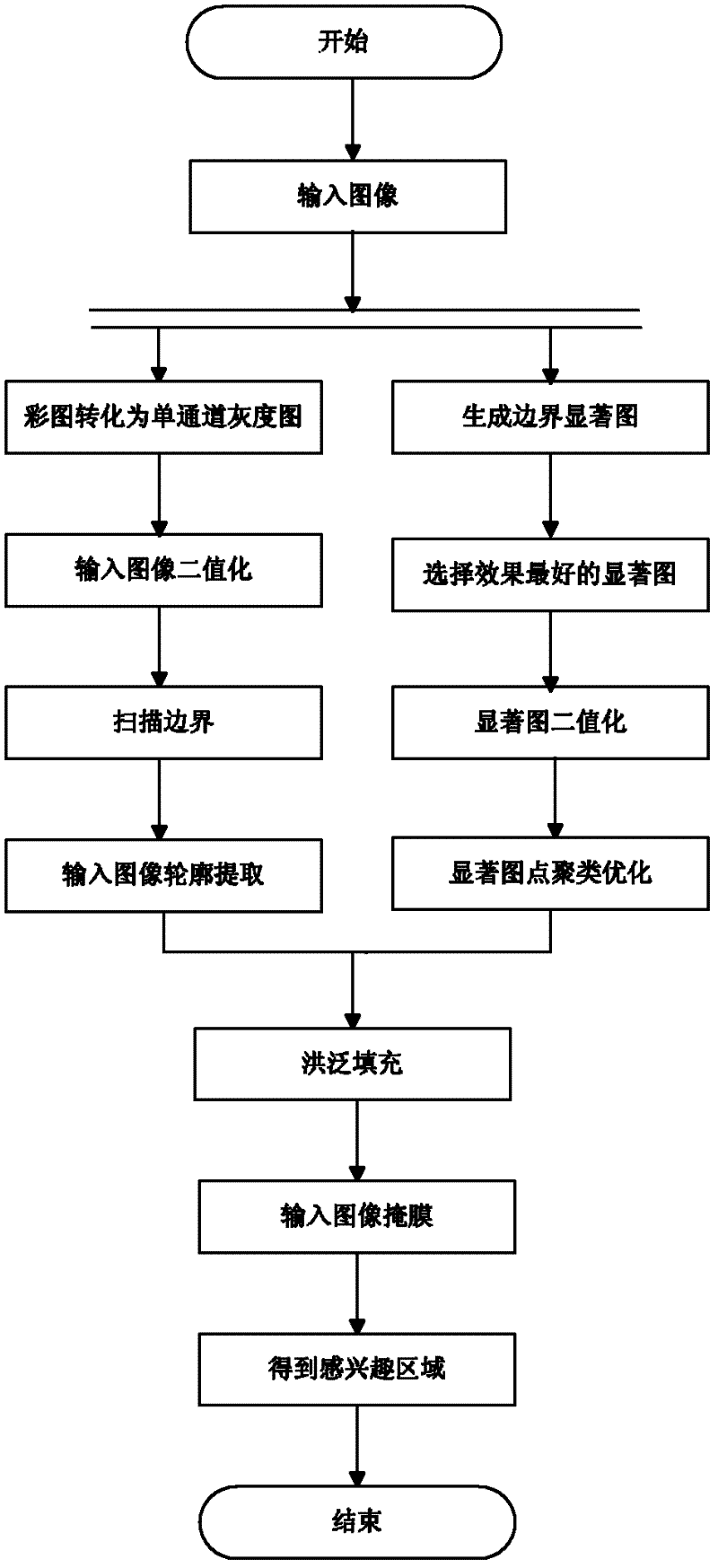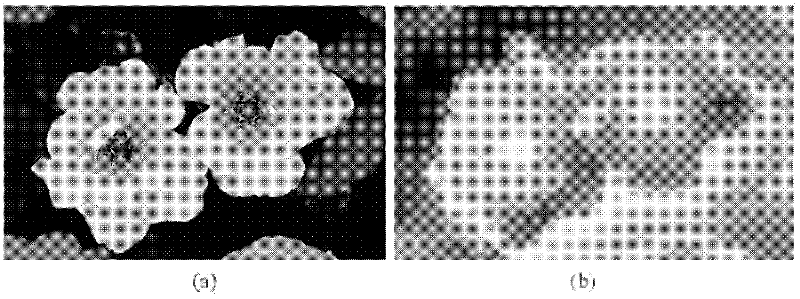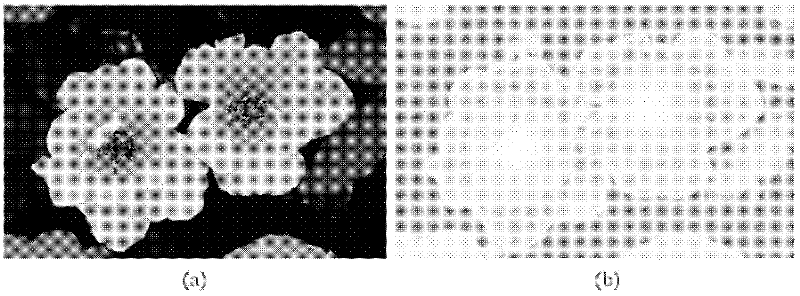Region of interest extraction method of pixel level
A technology of region of interest and extraction method, which is applied in image analysis, image data processing, instruments, etc., can solve problems such as difficult extraction of region of interest of low-salient objects, influence of significant image noise errors, and blurring of salient images
- Summary
- Abstract
- Description
- Claims
- Application Information
AI Technical Summary
Problems solved by technology
Method used
Image
Examples
Embodiment 1
[0060] The general framework of the present invention is as figure 1 As shown, the implementation details of each step are introduced now.
[0061] 1. Preprocessing to extract the original image of the region of interest, such as figure 2 (a). First put figure 2 (a) A gray-scale image converted into a single-channel eight-bit format, whose color is represented by three eight-digit values of R, G, and B, respectively, the size of its red, green, and blue color components. When converting to a grayscale image, use the Rec.ITU-R BT.601-7 standard proposed by the International Telecommunication Union (ITU) to carry out weighted addition of color components. The weighted conversion relationship corresponding to the gray value is obtained by formula (1), where Y is the gray value, and R, G, and B represent the red, green, and blue color components of the color image, respectively.
[0062] Y=0.299×R+0.587×G+0.114×B (1)
[0063] Since you are using a single-channel eight-bi...
PUM
 Login to View More
Login to View More Abstract
Description
Claims
Application Information
 Login to View More
Login to View More - R&D
- Intellectual Property
- Life Sciences
- Materials
- Tech Scout
- Unparalleled Data Quality
- Higher Quality Content
- 60% Fewer Hallucinations
Browse by: Latest US Patents, China's latest patents, Technical Efficacy Thesaurus, Application Domain, Technology Topic, Popular Technical Reports.
© 2025 PatSnap. All rights reserved.Legal|Privacy policy|Modern Slavery Act Transparency Statement|Sitemap|About US| Contact US: help@patsnap.com



